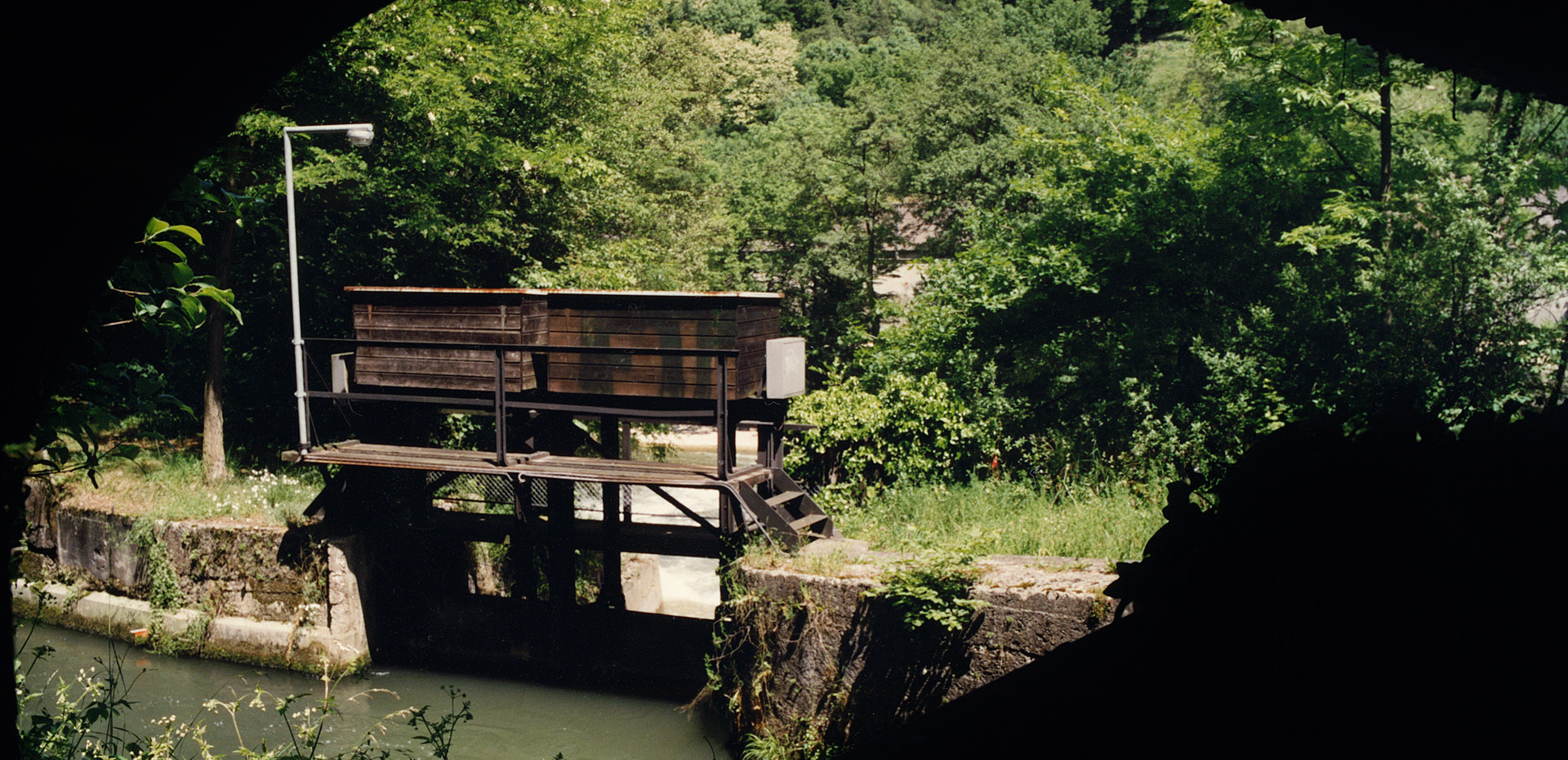Vordere and Hintere Teich
A few metres behind the wall, the St. Albanteich divides into two branches, the Vordere and the Hintere Teich (front and back canals). Where they separate, each of the branches is equipped with a metal sluice gate that can be used to regulate or interrupt the water supply. The Hintere Teich branches off to the north right away and flows into the Rhine after 180 metres. The Vordere Teich initially continues to flow in a north-westerly direction before it too takes a bend to the north and flows into the Rhine.
The Schindelhof (shingle yard) was located next to the bridge over the Vordere Teich. This is where the timber that was rafted down the Teich was stored and processed. Shingles were produced until the 17th century, even though covering roofs with shingles had been prohibited after the town fire in 1417. “Teuchel” (wooden water pipes) were also drilled here, and grapevine supports fabricated.
Behind the Schindelhof, there is a section just under 200 metres long that has evidently never been used com-mercially. Possibly the gradient was too slight to drive waterworks. The gradient only becomes steeper after the bend to the north, and the first mills follow. The following applies to both the Vordere and the Hintere Teich: the closer the mill was to the Rhine, the greater its capacity.
The Museum of Contemporary Art is located on the Vordere Teich on the site of three former mills. The new building designed by the architects Wilfried and Katharina Steib in 1979 replaced the Spital and Steinenkloster mills on the right-hand side of the Teich; the old factory building on the left-hand side of the Teich was erected in 1892 to replace the burnt-down Oris mill.
Image no. 3 State Archive of the City of Basel, image identification: BILD Schn. 4 Rheinufer im St. Albantal um 1874

















